
The two castles of the Dutch Water Line
Bring yourself, Sietse will do the same
Sietse van Berkel (33) is a BMX athlete (former world champion) and loves to bike along the castles in the region of the Water Line.
Sietse van Berkel
I’m a professional BMX athlete and love to visit Loevestein Castle and its surroundings for inspiration. BMX is one of the extreme sports, in which you compete with a stunt bike. There are not a lot of rules in this sport at the moment; it’s all about creativity, which is why you need to seek out different sources of inspiration. I love to play with contrasting juxtapositions and to bring different worlds together.
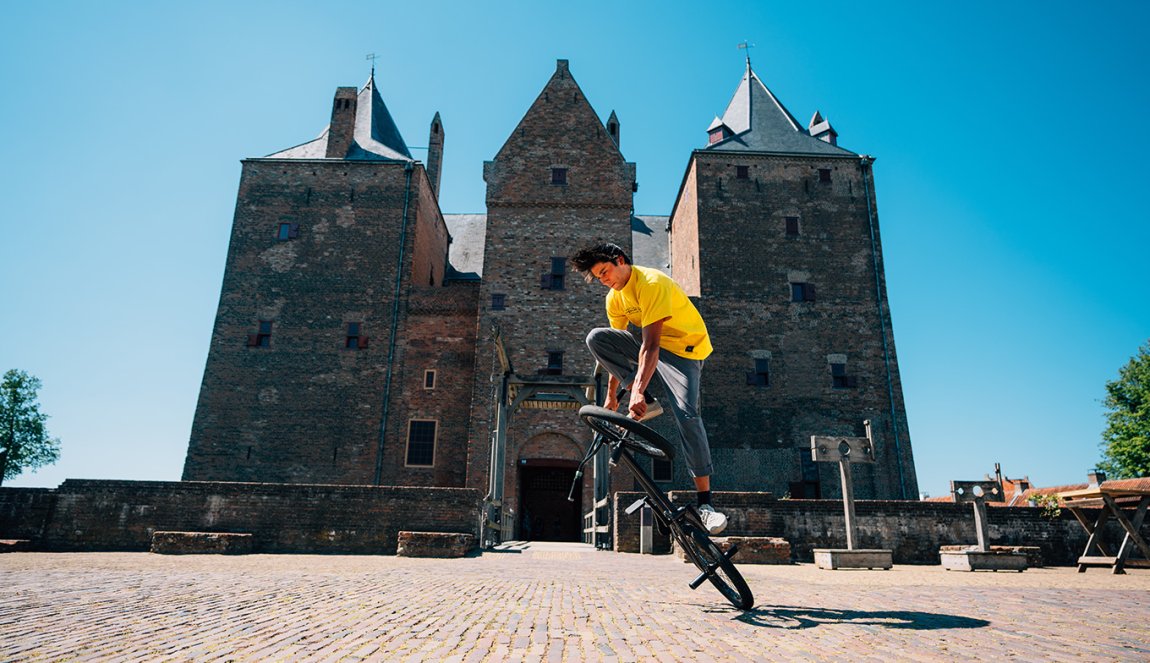
Loevestein: a castle between two rivers
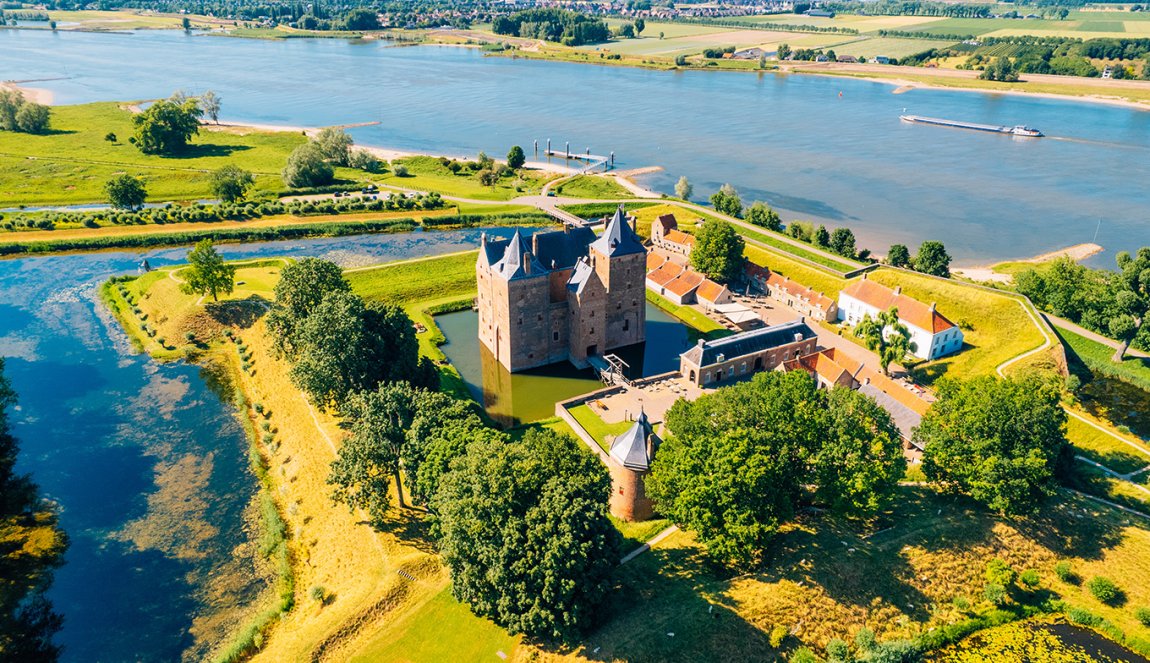
Water is an important theme for Loevestein Castle. The castle was built in the 14th century at a strategic location between two rivers in the border region of the province of Gelderland. As a prison for political prisoners, water provided a natural wall to keep prisoners in. Once it became part of the defenses of the Dutch Water Line, it kept the enemy at bay outside of the fortress. Nowadays, water still plays a major role as we deal with rising sea levels and the danger of flooding. With about one third of the country lying below sea level, the Netherlands constantly has to deal with encroaching water.
What we consider to be rather normal, is in fact quite extraordinary.
Muiderslot Castle
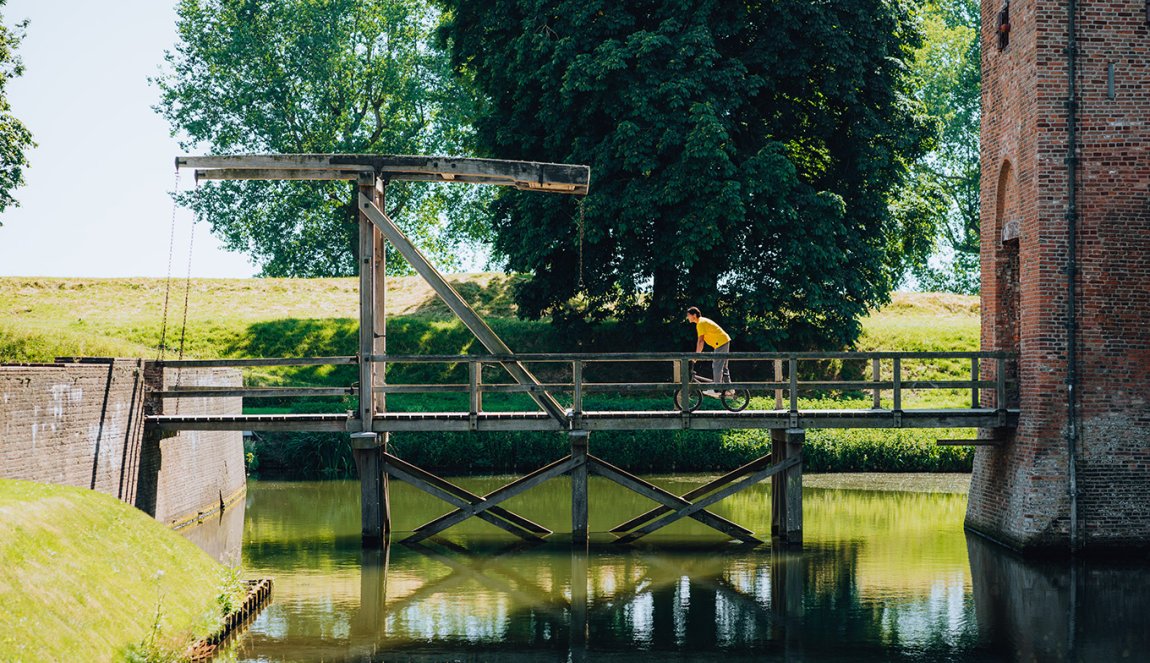
Muiderslot Castle has an impressive 700-year history and is the oldest moated castle in the Netherlands. It is strategically located near the fortified town of Muiden where the river Vecht flows into the former Zuiderzee, now the IJmeer near Amsterdam. Like Loevestein Castle, this castle is completely surrounded by a deep moat. Once the drawbridge was raised, the enemy could not reach the castle. A ring of water served as defense mechanism. Fun tip: in the interactive Waterschild pavilion at Muiderslot Castle, you can learn more about this method of defense and the Dutch Water Line.
Cycling around the castles
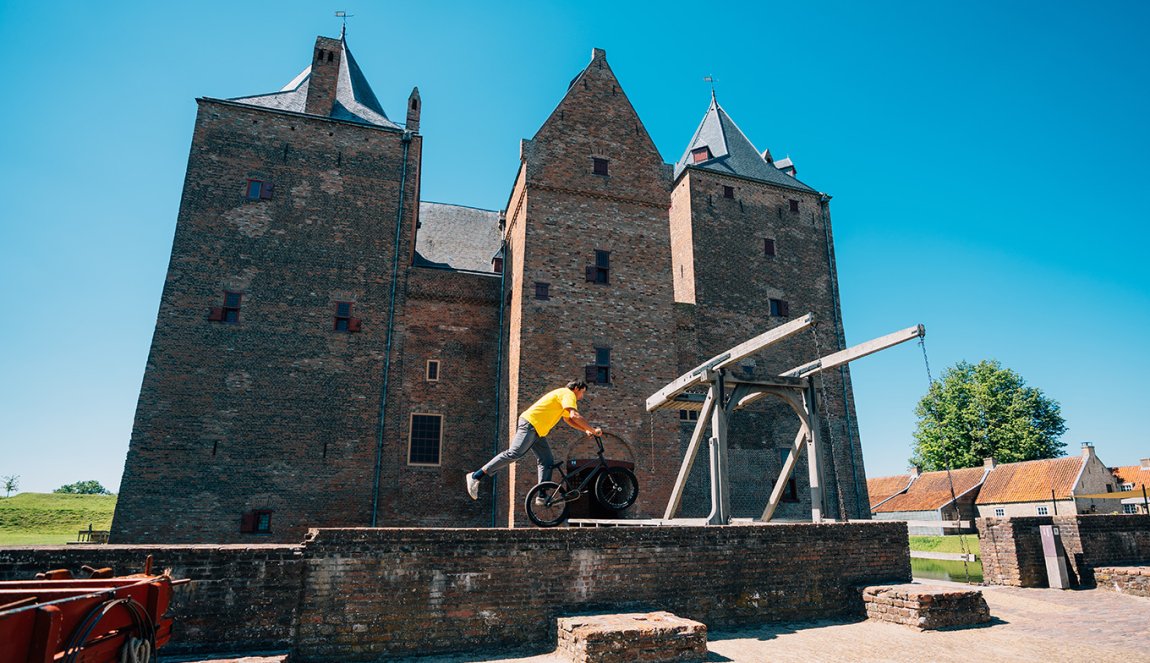
I grew up near the southernmost sluice of the Dutch Water Line. When you are a child you think nothing of it, but I now realize how special it is. When cycling along the Water Line, you see sluices and locks, fortresses and dikes. It’s really quite extraordinary, which is why UNESCO declared the New Dutch Water Line and the Defense Line of Amsterdam to be World Heritage Sites.
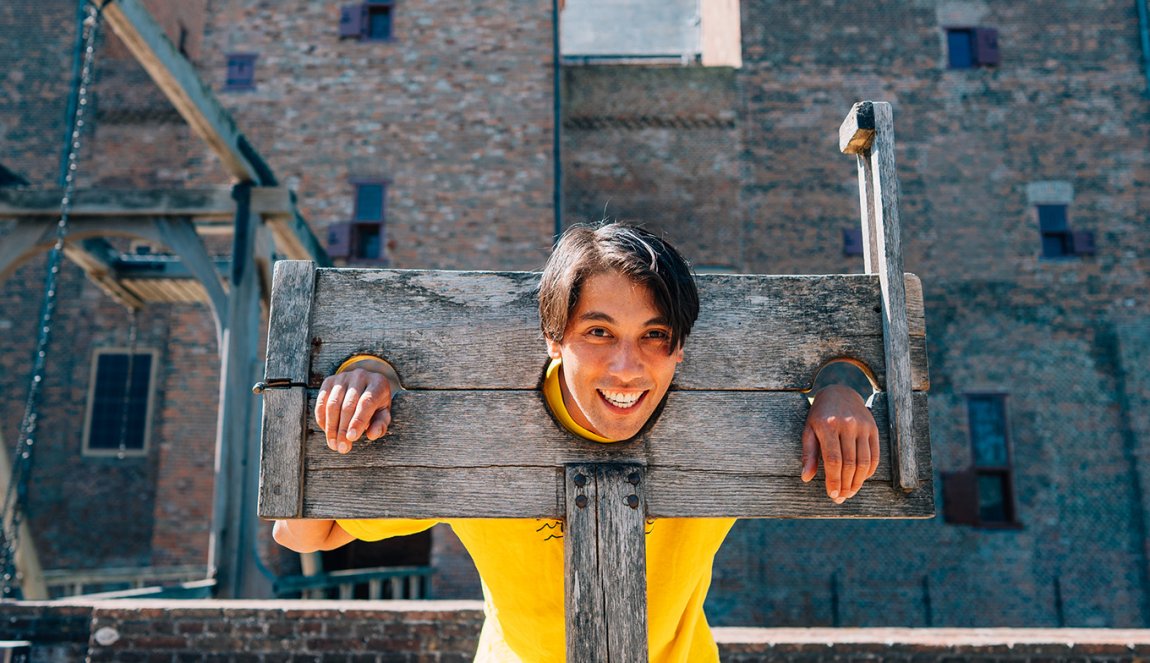
Both castles allow you to experience the role water plays in the Netherlands and invite you to view the Dutch landscape from a different perspective. I love to see how different areas of interest come together. Muiderslot Castle is the prime example of how we used water as a means of defense, whereas Loevestein Castle, with its location on the flood plain between two rivers, is perfectly situated for an exhibition about water management. How high will the water rise if the river really needs room? Experience this yourself when you arrive via the headland between the rivers, a drive straight through rugged nature. Suddenly you see the castle rising out of the wilderness. It’s truly stunning and always reminds me of the famous Mont St. Michel in France.
